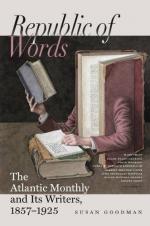Many of our instructors were well satisfied with the new state of things. Some of the older ones had been educated as priests, and were officiating in their calling, when the Revolution broke in upon them, trampling alike on sacred shrine and holy vestment. The shaven crown was a warrant for execution, and it rolled beneath the guillotine, or fell by cold-blooded murder at the altar where it ministered. Infuriated mobs hunted them like bloodhounds; and the cloisters of convent and monastery, which had hitherto been disturbed only by footsteps gliding quietly from cell to chapel, or the hum of voices mingling in devotion, now echoed the tread of armed ruffians and resounded with ribaldry and imprecations. An old man, who was for a time my teacher, told me many a tale of those days. He had narrowly escaped, once, by concealing himself under the floor of his room. He said that he felt the pressure, as his pursuers repeatedly passed over him, and could hear their avowed intention to hang him at the next lamp-post,—a mode of execution not uncommon, when hot violence could not wait the slow processes of law.
These men saw in the Restoration a hope that the good old times would come back,—that the crucifix would again be an emblem of temporal power, mightier than the sword,—that the cowled monk would become the counsellor of kings, and once more take his share in the administration of empires.




